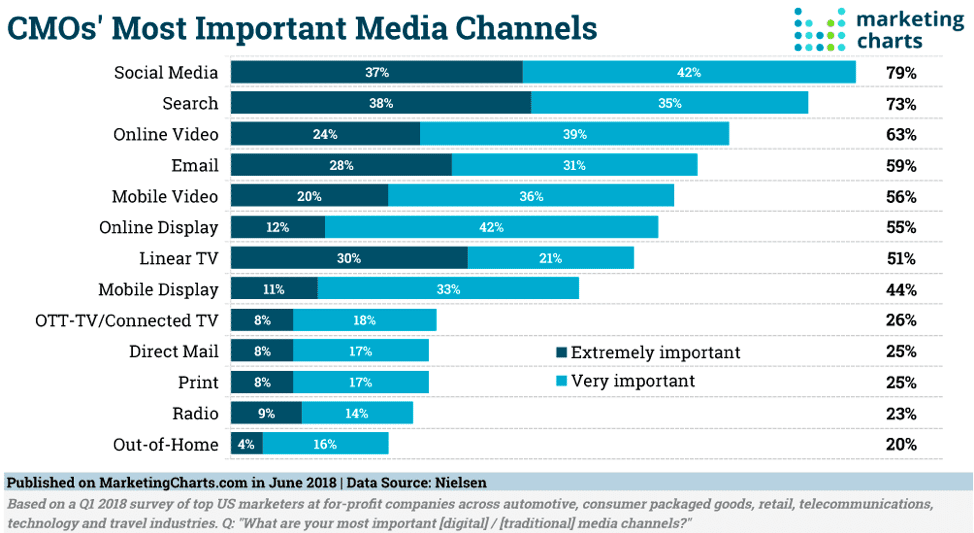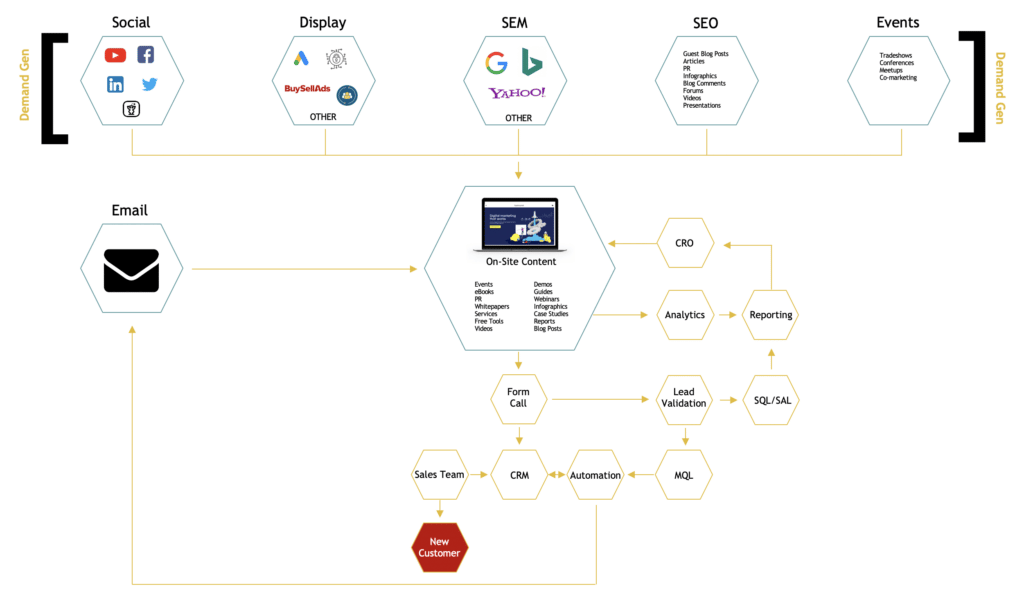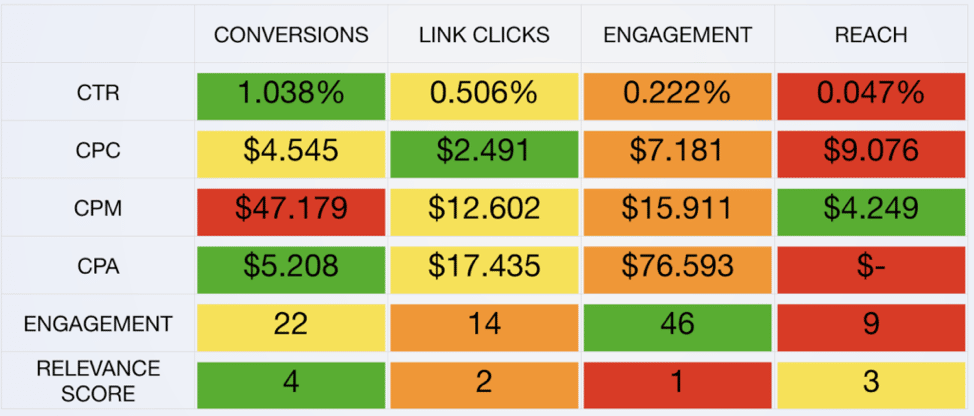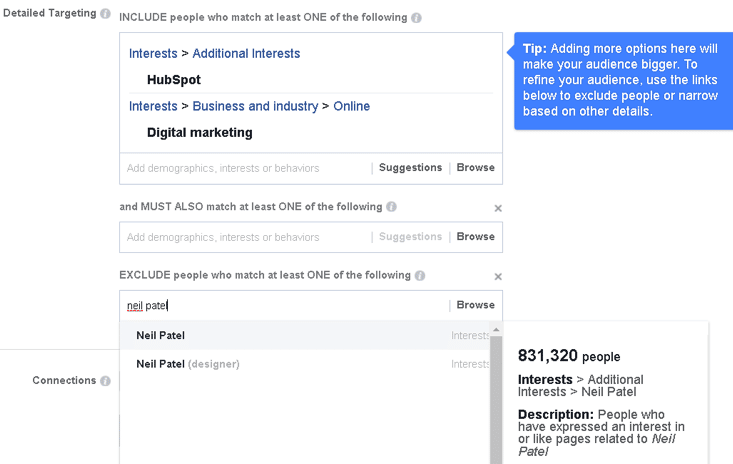Digital ads are more powerful and insightful than billboard, radio, or television ads. They create mutual value for advertisers and customers.
Whether you are a solo entrepreneur, the chief marketing officer (“CMO”) of a larger firm, or a business owner, you will want to leverage the power of digital ads in your work.
That said, actually designing and executing a digital ads strategy that will drive leads and sales is an entirely separate question.
Even though there is a wealth of tools at your fingertips, it is important to know exactly how to use those tools to accomplish your business goals.
In this post, I’m going to take a deep dive into running digital ads that will drive leads and sales, including:
- everything from the goals and greater purposes of digital ads;
- the marketing funnel for ads, how ads should be positioned to effectively meet customer lifecycles;
- the importance of being strategic in choosing your advertising platforms;
- and how you can best leverage ad targeting.
By the end of this post, you will have a much better understanding of the digital advertising landscape and how digital ad tools can generate a significant return on investment for your business.
The Power of Digital Ads in Helping You Accomplish Your Business Goals
To start this post, let’s explore how digital ads can help you accomplish many of your marketing goals. There are many different types of digital ads, whether we are talking about pay-per-click advertising (like in Google AdWords), email marketing ads, ads on social media platforms, affiliate marketing and more.
CMOs overwhelmingly view these ads as more powerful than the alternatives. In 2018, Nielson asked top U.S. marketers at for-profit companies to share their most important media channels. The results are below:

As you can see, “legacy media” is far behind digital platforms. Linear television was the most prominent offline platform, yet it lagged behind six different digital media channels.
All of these digital ad opportunities have their pros and cons. The bottom line, however, is that digital ads offer marketers a wealth of value. They give all businesses the chance to more easily connect with warm leads and convert those leads into paying customers.
Digital ads have a global reach, allowing your business to connect with and find customers from all over the world. You can leverage personalization and track the progress of your digital ad campaigns with a wealth of analytics. Done well, some of your digital ads have the potential to go viral (look at Dove’s Real Beauty Sketches campaign). And best of all? You can get these benefits at a fraction of the cost that you would through alternative advertising platforms.
Ultimately, digital ads can help you find those valuable warm leads, build your brand equity in your sector or industry, and can help you start building long-term relationships with new evangelists of your product or service.
How to Develop Your Digital Ad Strategy
Before you start spending money on advertising, it’s important to create an ad strategy that aligns with business objectives so you always have a goal in mind. I like looking at the entire marketing mix and understanding which pieces of content will help attract, engage, and convert potential customers. Here’s an idea:

From there, you’ll want to map out what the buyer journey looks like once they’ve engaged with you.

The success of your digital ads will come from your ability to also break out your goals into bitesize chunks – whether it be by month or quarter, you have a way to tracking progress. Doing so will help you see what’s actually working, what isn’t, and where you will need to improve.
Being Tactical by Choosing the Best Platforms For You
One flaw that businesses make is thinking that they have to advertise on every media channel. This can be a costly mistake.
Not only does it take time to create ads and target audiences on each of these platforms, but running ads on all of these platforms may lead to a poor return on investment.
Therefore, it is important to be strategic here. Below, you will find a brief analysis of some of the different digital ad platforms that you may want to leverage.
1. Google Ads
This is one of the big ones. Along with Facebook ads, Google Ads is the most dominant digital advertising platform on the Internet today. The statistics are stunning: Google owns the world’s largest online display advertising network. According to a study from January to March 2019, Google properties take up a whopping 94.15 percent of search engine market share.
Along with this, search engine users find value in pay-per-click ads. According to a recent study, 75 percent of respondents said that paid search advertisements make it easier to find information that they are seeking on a website or search engine. Because of this, Google Ads can be an extremely compelling way to reach targeted leads and convert them into customers.
Ultimately, there are several benefits to using Google Ads. It is easy to get started and Google Ads offers an intuitive user interface. There are plenty of destinations for your ads, whether it is on the original Google search engine, Google Maps, or Google Images. There is no minimum budget for your campaigns and you can quickly iterate and improve your current campaigns.
Having said this, Google Ads can be expensive—especially if you are getting irrelevant clicks. If your business is in an extremely competitive industry or sector, you will find that your selected keywords have extremely high costs per click. Finally, while it is easy to begin, Google Ads can be hard to master.
2. Bing Ads
While Google gets most of the attention in the paid search world, Bing can be a compelling alternative. The numbers don’t lie, however. Bing only has 2.32 percent of the worldwide search engine market share. Google has 92.71 percent.
Considering this, there are several advantages and disadvantages to running your digital ads on Bing.
Most prominently, Bing ads are often less expensive than Google ads. You also have a better chance of reaching the top of page listings for your chosen keywords. That said, costs are lower and you have a better chance of reaching the top of your chosen page listing because the platform is less popular. You will have to analyze this trade-off and determine whether the lower cost, yet lower footprint of Bing is appealing. Along with costs and footprints, Bing ads have a lower click-through rate than Google ads. But compared to Google, Bing has an older audience, meaning that it can be a great platform if your product or service appeals to an older crowd.
3. Facebook Ads
Even though Facebook is still a teenager, it has already transformed the digital ad landscape. Along with 2.41 billion active users and being the third-most visited website on the Internet, an average Facebook user clicks on 11 ads per month. And according to one survey, 26% of Facebook users who clicked on ads reported making purchases.
Facebook is clearly a juggernaut and the clear leader in social media ads. One of the biggest advantages of Facebook is that you are able to access a huge global audience for your product. Even though Facebook has received a significant amount of criticism for its data collection policies, Facebook’s targeting capabilities are second to none. Lookalike audiences, for instance, let you easily find Facebook users who are more likely to be interested in your product or service. Facebook also lets you run campaigns for as little as one dollar per day.
As for downsides, however, Facebook ads can have a low clickthrough rate compared to alternatives like Google Ads. Conversions are lower compared to Google Ads. Also, one issue with Facebook Ads is due to increasing clutter on the Facebook News Feed. It can be difficult to get your users’ attention, as there are other compelling distractions next to your ad.
4. Instagram Ads
Instagram has become the shining star within the Facebook suite of digital properties. One of the many reasons is its stellar engagement. Over one billion people use Instagram every month and 500 million people use Instagram stories every day. This year, the average Instagram user will spend 28 minutes per day on the platform. Instagram is also great for advertisers, as one-third of the most-viewed Instagram Stories are from businesses.
Like Facebook, one key advantage of Instagram ads is that you can leverage precise targeting. Because Instagram works hand-in-hand with the Facebook ads platform, you are able to get your ad and message in front of users who are more likely to become customers. Instagram ads also let you use unique ad formatting, whether you want to post your video ad in a user’s feed or take advantage of ads on Instagram Stories. A wealth of analytics—including detail on what your demographics prefer—is also extremely valuable.
Having said this, Instagram ads, because of the platform’s young user base, can prevent you from reaching an older audience. You will primarily need to work through a mobile platform, as Instagram’s web tools are not as developed as alternatives. Critically, Instagram ads don’t let you add a specific clickable link that can take your users to a specific landing page.
5. LinkedIn Ads
LinkedIn is obviously known as the straightlaced, professional network. In the past few years, it has experienced stellar growth around the world.
Many LinkedIn users are college-educated, and therefore, wealthier than users on other social media platforms. Increasingly, more articles and videos are being posted on LinkedIn, making it a platform that users visit even if they aren’t looking for a new job.
LinkedIn ads can be perfect for you if you are looking for a well-educated audience with discretionary income. There are plenty of targeting options on the platform, allowing you to connect with LinkedIn users who are most likely to become customers. Also, because of the nature of the platform, you are unlikely to be subject to the negativity and criticism that is found on other social networks.
As for disadvantages, LinkedIn ads can be more expensive than other social networks. The minimum daily budget and cost-per-click are typically higher than a platform like Facebook Ads or Google Ads. In addition, LinkedIn lags behind competitors in terms of video ad opportunities.
6. Twitter Ads
Even though it may not be the biggest social media platform, Twitter takes up much of our daily conversation. It has around 145 million monetizable daily active users who discuss everything from politics and business to the latest meme. While the user base isn’t expected to grow at the stellar growth rate as experienced in the past, hundreds of millions of Twitter users visit the platform and engage with each other.
Twitter ads can be a great opportunity because of the massive size of your potential audience and its ease of use. Compared to Facebook, Twitter lets you target particular keywords, phrases, and hashtags, giving you extensive control over your campaigns. You can also take advantage of vast retargeting opportunities and the fact that you only pay for completing an objective.
On the flip side, Twitter ads can be expensive, as the cost-per-click is often higher than Facebook or Google. The Twitter feed also moves fast for many Twitter users, making it more likely that your campaign is simply missed by your target audience.
7. YouTube Ads
YouTube is the second-most trafficked site on the Internet today. It has nearly two billion logged-in monthly users and users watch over one billion hours of YouTube content every day. Simply put, YouTube is a juggernaut of a platform that can be helpful in introducing your product or service to a new audience.
The main benefits of YouTube ads involve scale and cost. Along with huge reach, YouTube ads can be cheap (the first five seconds are essentially free). You also have multiple options to leverage, whether that is pre-roll, display, or promoted videos. As for disadvantages, YouTube ads do not offer third-party tracking, targeting can be hit or miss, and your brand message can be more easily diluted.
These are just some of the platforms that offer compelling digital ad opportunities. As you can see, they have their pros and cons, so you will want to closely study your objectives and the platforms themselves to make the best decision.
Ad Targeting: Some Helpful Tips
In this discussion about platforms for your digital ads, one word kept coming up. That is targeting. Regardless of the platform, targeting is a critical part of any digital ad strategy. Targeting the right prospects will increase your conversion rate while a poor targeting strategy can lead to wasted time and dollars.
Ad targeting inevitably takes some trial and error. That said, there are some first principles that you should follow when designing your digital ad strategy.
1. Leverage Existing Email Lists
One of the greatest things about digital ad targeting today is that you are able to more easily find new prospects by uploading existing email lists to some of these social media platforms. Facebook is the best example here. According to its step-by-step guide, you can upload a customer list in a CSV or TXT file to the platform. From there, you can target ads to that custom audience. Perhaps the more intriguing option, however, is to use that new custom audience as a basis for a lookalike audience, which lets you find new people who share similar behaviors and interests with your current customers.
Other social media platforms (like Twitter) offer a similar opportunity. If you have a robust email or customer list, don’t hesitate to take advantage of lookalike audience opportunities. They can help you generate a consistent flow of warm leads.
2. Take Advantage of Conversion Tracking Pixels
This is a simple, yet absolutely critical tool that can inform your future social media ad campaigns. Pixels are essentially small bits of code that you can add to your website and online campaigns. They present you with detailed information about your users’ online behaviors, which you can then incorporate in your future campaigns.
Whether you use a WordPress site or something else, make sure that you are adding pixels to your online properties. They can collect a wealth of valuable data that can ultimately increase the effectiveness (and return) of your digital ad campaigns.
As just one example, AdEspresso wanted to learn how campaign optimization types like conversions, link clicks, engagement, and reach impacted key metrics like cost-per-click and cost-per-lead. The company discovered that their cost-per-lead was about three times higher for link click optimization than conversion optimization, as you can see in the table below:

This is just one effective way to use tracking pixels. Make sure you leverage them in all of your digital properties.
3. Make Sure to Exclude Irrelevant Audience Members
Much of the discussion in online ad targeting focuses on finding that particular group of warm leads that will substantially increase your conversion rates and sales. That said, equally as important is avoiding audiences that are not going to move the needle for your digital marketing goals.
For instance, you will want to avoid running ads in front of audience members that already know your business. Neil Patel shows how you can easily do this when you are running a Facebook ad, for instance.

By targeting both discrete interests and avoiding those who already follow your company, you maximize the potential ROI of your digital ad campaign.
Don’t forget this point, as it can save you in terms of both costs and time allocated to your digital advertising work.
Get Started Today
Digital advertising is a fantastic way to find new leads, convert those leads into paying customers, and to build brand equity in your industry or sector. Just make sure that whatever you do, you’re present where your customers are, and you’re focused on driving value over a quick sale.






4 Responses